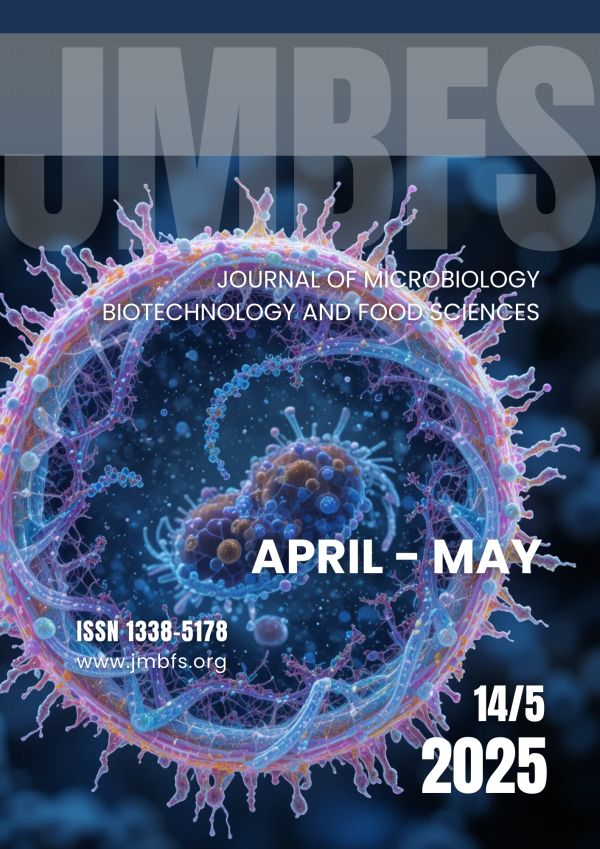UNVEILING A THERMO-ALKALIPHILIC BACTERIAL ISOLATE AS POTENTIAL LIPASE PRODUCER FROM LOCAL WATERBODY, KOCHARVA, VAPI, INDIA: MEDIA OPTIMIZATION STUDIES
DOI:
https://doi.org/10.55251/jmbfs.11131Keywords:
Thermo-alkaliphilic, Bacillus subtilis, Plackett-Burman Design, Central Composite Design, Response Surface methodAbstract
Our study reports thermo-alkaliphilic bacterial isolate C-1, with lipolytic potential, obtained from a local water body, located in Kocahrva village, Vapi, Gujarat, India, loaded with industrial effluents, identified as Bacillus subtilis, based on biochemical and molecular characterization (GenBank Accession no. MN068818). The present study is directed towards media parameters optimization for Bacillus subtilis C-1 lipase productio, using Plackett-Burman Design and response surface methodology. Various media variables viz., glucose, olive oil, MgSO4, ammonium chloride, KH2PO4, peptone, tryptone, and CaCl2 were tested using 16 runs design. In accordance with the Pareto chart, glucose, peptone, MgSO4 and CaCl2 were significant factors. The maximum lipase activity obtained was 21.48 Enzyme Units (EU)/ml. These significant media variables were further optimized for concentration, using randomized Central Composite Design, prepared using Design Expert (v.12.0.1). The lipolytic activity increased to 32.1 EU/ml, which was 1.49 times greater, with 3 gm% glucose, 3.5 gm/L peptone and 0.5 gm/L MgSO4. Biochemical characterization of partially purified C-1 lipase, demonstrated optimum pH 10.0 and optimum temperature for 55oC. Hence, it was accomplished that Bacillus subtilis C-1 strain can be a prospective lipase source for large scale production.
Downloads
Downloads
Published
How to Cite
Issue
Section
License
Copyright (c) 2023 APARNA JITESH TAILOR, Nipun Bayia , Rekha R. Gadhvi

This work is licensed under a Creative Commons Attribution 4.0 International License.
All papers published in the Journal of Microbiology, Biotechnology and Food Sciences are published under a CC-BY licence (CC-BY 4.0). Published materials can be shared (copy and redistribute the material in any medium or format) and adapted (remix, transform, and build upon the material for any purpose, even commercially) with specifying the author(s).





